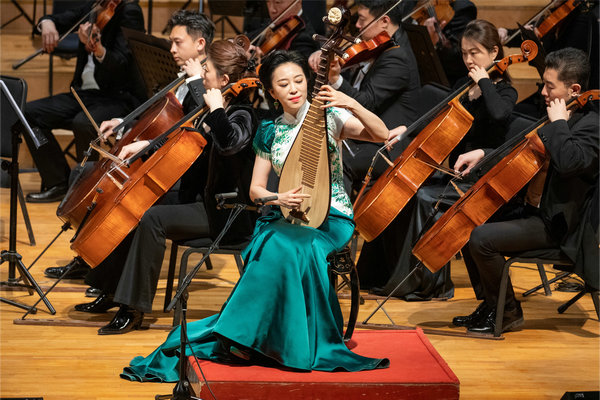

When Tan was invited to compose a new piece about Beijing's Central Axis — the 7.8-kilometer north-south line through the historical center of the capital, which generally follows a symmetrical structure — his memories of the city and his younger days at the conservatory came back to him vividly.
On Saturday, the Beijing Symphony Orchestra staged a concert under his baton, premiering his new piece, Ancient Bells of Peking's Central Axis, featuring pipa (a four-stringed Chinese lute) player Zhao Cong. During the concert, which was held at the Forbidden City Concert Hall, Tan also rearranged some of his other pieces, including Farewell My Concubine, which is a double concerto for piano and Peking Opera, and orchestral concertos, Marco Polo, and Rock the Violin in Rhapsody, featuring soloists, pianist Ralph van Raat, Peking Opera actress Xiao Di and violinist Susan Tang.
The Central Axis formed gradually starting in the Yuan Dynasty (1271-1368), when Beijing became the national capital, according to Li Jianping, an expert on Beijing history. The Forbidden City, China's imperial palace from 1420 to 1911, now known as the Palace Museum, is also located along the Central Axis.
On the day of the concert, Tan also organized a daylong program, A Day in Peking's Central Axis. Along with musicians from the Beijing Symphony Orchestra and pipa player Zhao, he visited key historical sites, including Jingshan Park, the Bell and Drum towers, and Yongdingmen Gate, between 6 am and 3 pm, seeing the city at different hours and performing the piece at each location to shoot a video. The day concluded with the concert at the Forbidden City Concert Hall, which is located inside Zhongshan Park, next to the Palace Museum.